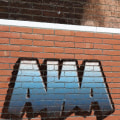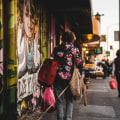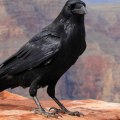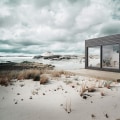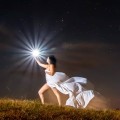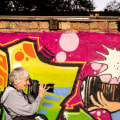Street art is a unique form of art that has been gaining traction in recent years. It captures the vibrancy and energy of urban life in a way that traditional art forms can’t. Capturing the art of the street is an interesting and rewarding challenge for photographers of all levels. It’s a great way to explore and express creativity, and to capture the beauty of a city in a way that no other medium can.
In this article, we will look at tips and techniques for capturing the art of the street, from selecting the right equipment to finding the perfect shot.
Composing Shots for Maximum Impact
Street art photography is all about capturing the emotion and beauty of the scene. To ensure your shots have maximum impact, it's important to understand the fundamentals of composition. Framing, lighting, and interesting angles can all help to create stunning images of street art. When composing your shots, consider the background and other elements in the frame. Make sure to leave enough space around the subject, and ensure that the background doesn't distract from the artwork itself.Try to find a unique angle that adds interest to the shot, such as a low angle or a high angle view. Lighting is another important factor when shooting street art. Natural light can be used to enhance the colors and textures of the artwork, but you can also use artificial light to create an interesting mood. Experiment with different lighting techniques, such as backlighting or side lighting, to add drama to your shots. Finally, be sure to keep your camera steady when shooting street art. Use a tripod or monopod if you need extra stability, as this will help to ensure sharp, blur-free images.
Choosing Locations for Street Art Photography
When it comes to capturing street art photos, the location is key.Street art often relies on the context of its surroundings, so the location can have a huge impact on the end result. But how do you go about finding the perfect spot for your street art photography? Here are some tips for researching and choosing locations for street art photography.
Research Online
The internet is a great place to start when researching potential locations for street art photography. Social media platforms like Instagram and Flickr can be a great way to find interesting places to shoot, as they often feature beautiful street art images from all over the world.Additionally, online forums and blogs devoted to street art photography can provide useful information about specific cities and locations.
Talk to Local Artists
If you’re shooting in a specific city or region, it can be helpful to talk to local artists about where to find the best street art. Local artists often have a good sense of which areas are home to the most vibrant and interesting street art. Additionally, asking local artists about specific pieces of work or locations can provide valuable insight into the street art scene.Check Out Street Art Festivals
Street art festivals are a great way to find interesting locations and capture unique pieces of work. Most festivals are held annually, and they often feature works from both local and international artists.Additionally, many festivals also feature special events such as workshops, talks, and performances. Attending one of these events can be a great way to learn more about the street art scene and get inspired by some amazing works of art.
Go on a Street Art Tour
If you’re looking for a more comprehensive experience, going on a guided street art tour is an excellent option. These tours are led by experienced guides who know all the best spots for street art photography. The tours often feature exclusive access to hard-to-reach spots and provide insights into the history and culture behind the artwork.Visit During the Day and Night
Street art can look quite different during the day compared to at night.It’s always worth visiting a potential location during both times of day to see if it’s suitable for your photography. Additionally, visiting during different times of year can also yield interesting results, as some pieces may only be visible during certain times of year.
The Equipment You Need for Street Art Photography
Capturing street art photos can be a challenging yet rewarding experience. To get the most out of your street art photography, it's important to have the right equipment. Here, we'll discuss the essential equipment needed for street art photography, why it's necessary, and provide examples of good quality, affordable options.Camera
The camera is the most important piece of equipment for street art photography.A camera with a high-quality sensor will help you capture clear, sharp images with accurate colors. Look for a camera that has manual settings so you can adjust aperture, shutter speed, and ISO as needed. Digital Single Lens Reflex (DSLR) cameras are great for street art photography since they offer excellent image quality and allow you to easily change lenses. Alternatively, you could use a mirrorless camera which offers many of the same features as a DSLR but is generally lighter and more compact.
Lens
The lens you choose will depend on what type of street art you plan on photographing.A wide-angle lens can be helpful for capturing large murals or street scenes while a telephoto lens can be used to capture small details from a distance. If you're looking for a versatile option, consider a zoom lens which offers the benefits of both wide-angle and telephoto lenses in one package.
Tripod
A tripod is an important piece of equipment for street art photography. Not only does it give you stability when shooting in low light, but it also helps minimize camera shake and blur when photographing large murals or intricate details. Look for a lightweight tripod with adjustable legs for easy transportation and setup.Filters
Filters can help enhance your street art photos by reducing glare from the sun or adding special effects to your photos.A polarizing filter is great for reducing reflections in water or glass while a graduated filter is helpful for balancing out bright skies and dark foregrounds. Neutral density filters are also useful for creating long exposure shots.
Lighting
Lighting is an important factor to consider when photographing street art. If you plan on shooting at night or in low light, consider investing in a portable lighting kit. This will help you capture better-quality images in challenging lighting conditions.Memory Card
Make sure to invest in high-quality memory cards with fast read/write speeds so your camera can keep up with your shooting needs.Memory cards are available in various sizes so make sure to choose one that meets your storage requirements.
Editing Your Street Art Photos
Editing your street art photos is an important part of the process for capturing stunning images that truly capture the beauty and emotion of the street art scene. There are several key aspects to consider when editing your photos, including adjusting color, contrast, and other settings.Adjusting Color
- Making sure your colors are vibrant and true to life is essential for capturing the street art. Adjust the hue, saturation, and luminance settings to get the exact look you want. Experiment with different color combinations to find the perfect balance for your photos.Contrast
- High-contrast shots can help emphasize the shapes and textures in your street art photos.Adjust the black and white levels to create a greater sense of depth. You can also use a curves adjustment layer to make more precise adjustments.
Sharpening
- Sharpening your images can help bring out the details in your street art photos. Use a high pass filter to sharpen the edges of your photos, or use a sharpen tool in your photo editing software.Other Settings
- Make sure to adjust other settings such as exposure, noise reduction, and white balance. These settings can help make your photos look their best. Street art photography is a great way to capture the beauty and emotion of the urban art scene.With the right equipment, techniques, and tips, you can capture amazing photos that showcase the best of street art. When choosing a location, consider the composition of your shots and how to best capture the unique elements of each piece. Don’t forget to edit your photos to bring out the best in each piece. By following these tips, you can create stunning images that will capture the art of the street.
If you're looking for more inspiration, check out some examples of great street art photography or join a local street art community.


